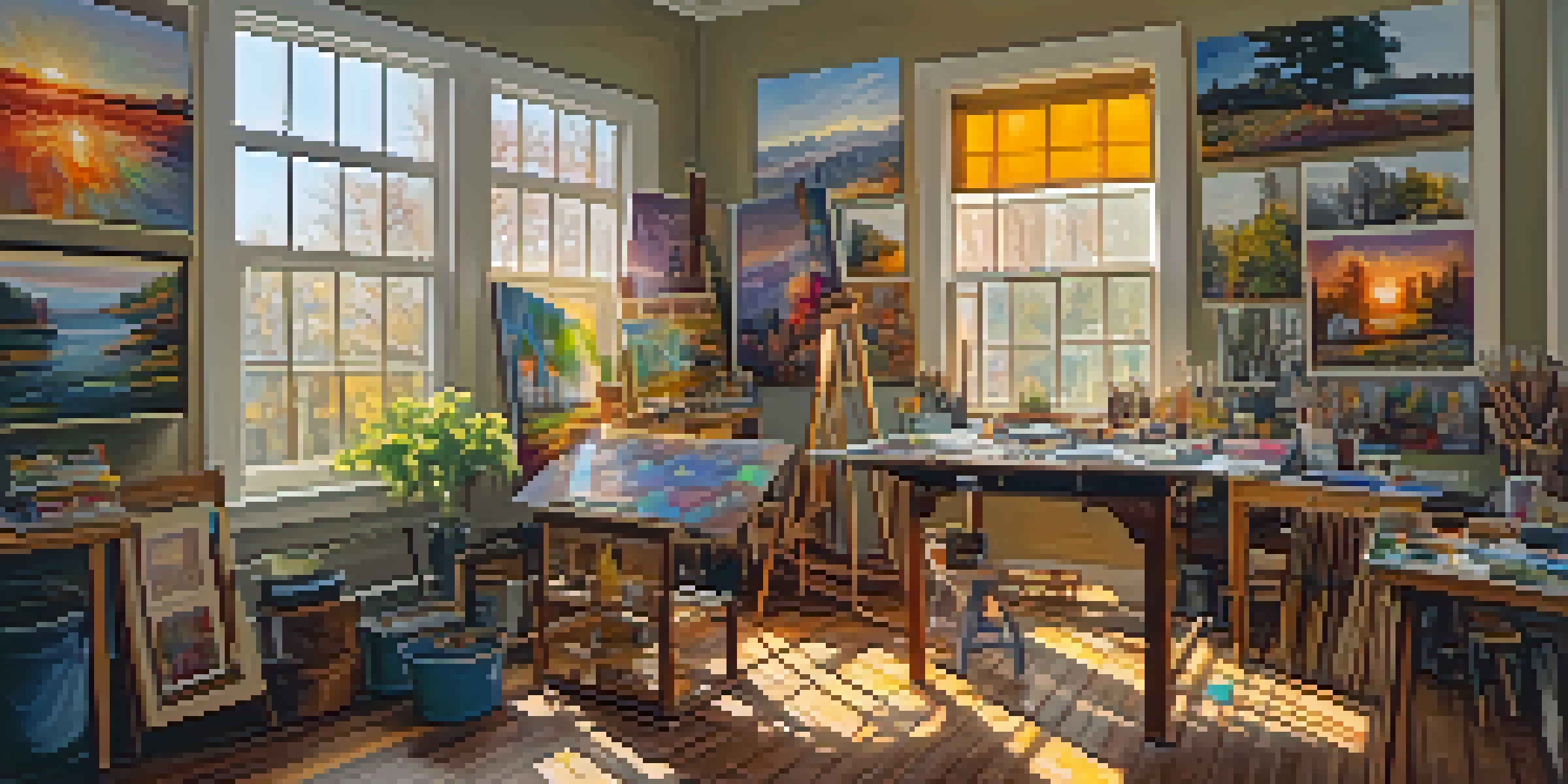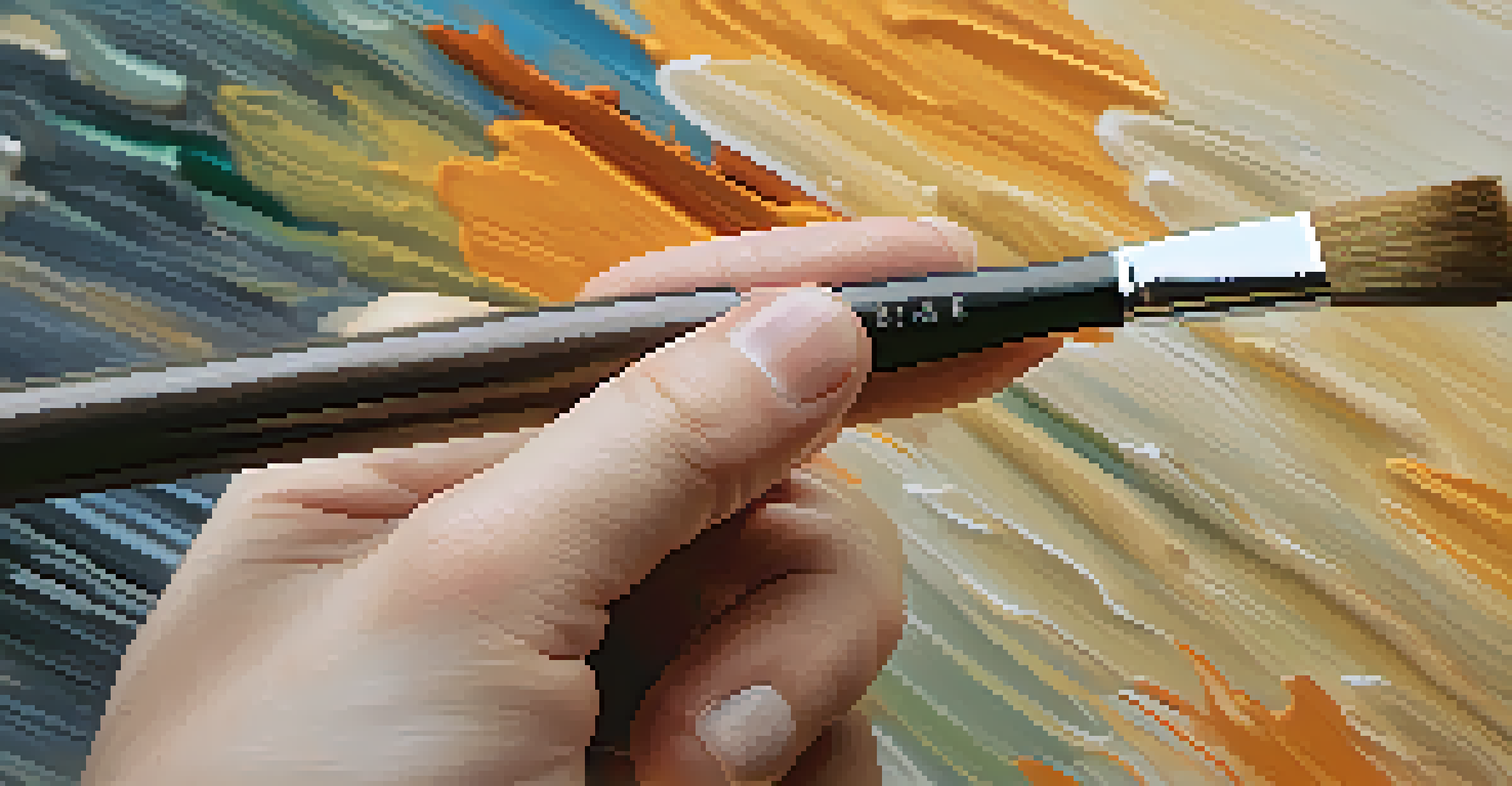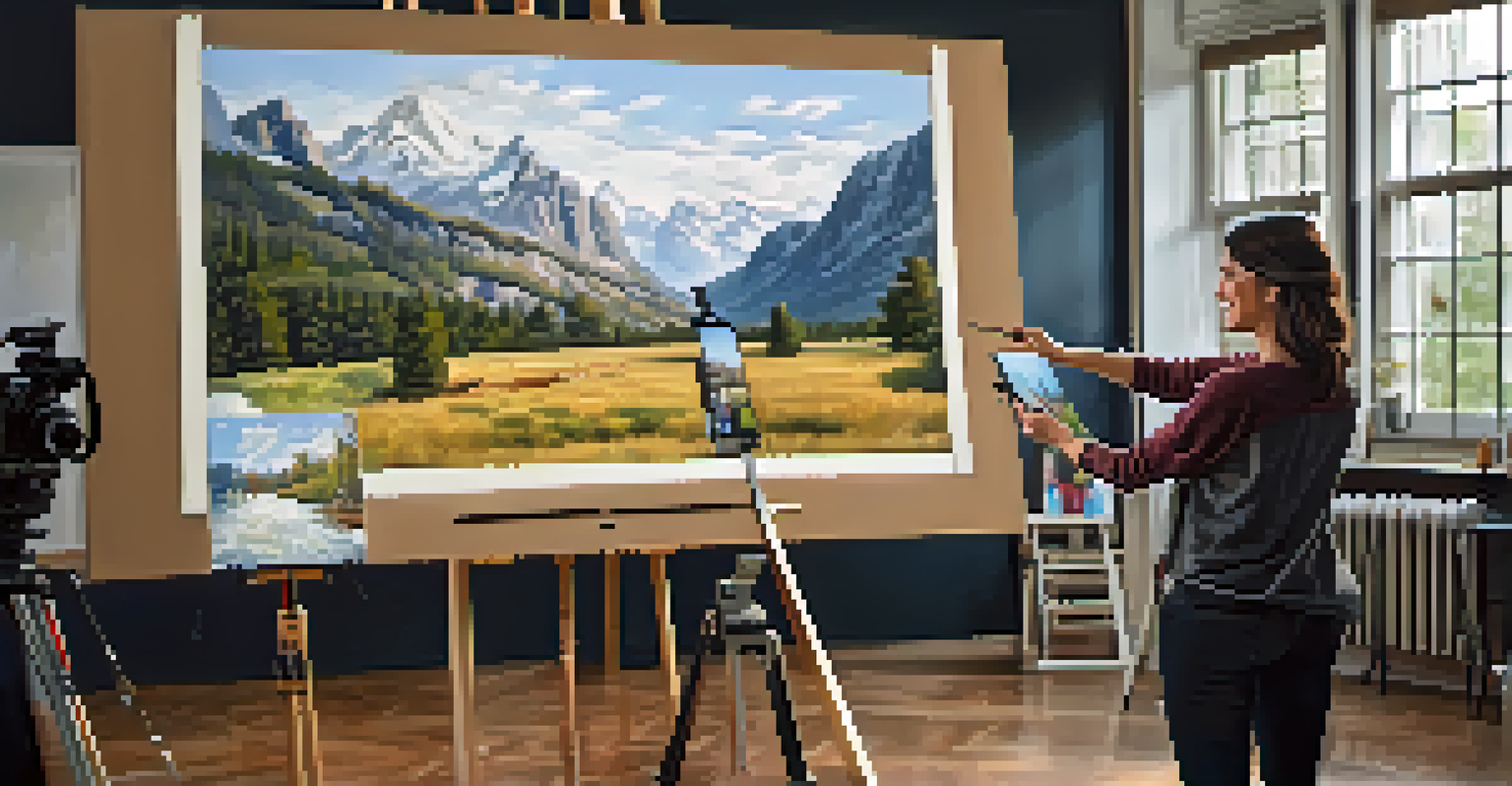Art Market Evolution: Selling Paintings on Social Media Today

The Rise of Social Media in the Art World
In just over a decade, social media has revolutionized how we connect, share, and sell art. Platforms like Instagram and Facebook have created a vibrant marketplace where artists can showcase their work to a global audience. This shift has democratized the art world, allowing emerging artists to gain visibility without the traditional gatekeepers like galleries and auction houses.
Social media is about the people, not about your business. Provide for the people and the people will provide for you.
Social media not only provides a platform for artists to display their paintings but also fosters direct engagement with potential buyers. Artists can share their creative processes, tell their stories, and even host live painting sessions, making the experience more personal and relatable. This interaction builds a community around the artist, enhancing the emotional connection between the creator and the collector.
Moreover, the visual nature of platforms like Instagram aligns perfectly with art sales, as users can scroll through stunning images and videos effortlessly. The integration of shopping features allows artists to sell their paintings directly through posts, further blurring the lines between social networking and e-commerce.
Understanding the Art Buyer of Today
Today's art buyers are a diverse group, often spanning different demographics and interests. Many are millennials and Gen Z individuals who value authenticity and connection over traditional status symbols. They are more likely to purchase art that resonates with them personally, often seeking pieces that tell a story or evoke an emotion.

This shift in buyer mentality means artists must adapt their marketing strategies. Instead of merely showcasing finished pieces, they are encouraged to share their journey, inspirations, and the meaning behind their work. By doing so, artists can create a deeper connection with their audience, which can lead to increased sales.
Social Media Transforms Art Sales
Platforms like Instagram and Facebook empower artists to reach global audiences, bypassing traditional gatekeepers.
Additionally, social media allows artists to tap into niche markets. Whether it's abstract art, street art, or eco-friendly pieces, these platforms enable artists to target specific communities interested in their style, making it easier to find buyers who truly appreciate their work.
The Power of Visual Storytelling in Art Marketing
Visual storytelling is a potent tool in the art market today, allowing artists to create a narrative around their work. By sharing behind-the-scenes glimpses of their creative process or the inspiration behind specific pieces, artists can engage their audience on a much deeper level. This storytelling aspect transforms a simple painting into a part of a larger narrative, making it more compelling to potential buyers.
Art is not freedom from discipline, but disciplined freedom.
For instance, an artist might post a series of images that illustrate the evolution of a piece from initial concept sketches to the final artwork. This journey not only showcases their skill but also invites viewers into their creative world, making them feel like part of the process. As a result, buyers are more likely to connect with and invest in the artwork.
The key here is authenticity. Audiences today can quickly spot inauthenticity, so being genuine in your storytelling is crucial. When artists share their true selves, it resonates with viewers, helping to foster loyalty and trust that can translate into sales.
Leveraging Hashtags and Trends for Greater Reach
Hashtags have become the lifeblood of social media marketing, helping artists expand their reach beyond their immediate followers. By strategically using relevant hashtags, artists can tap into larger conversations and make their work discoverable to potential buyers who may not have otherwise found them. This practice is akin to casting a wide net in a sea of art enthusiasts.
In addition to hashtags, keeping an eye on current trends can also be advantageous. Whether it's participating in popular challenges or jumping on viral content, aligning with trending topics can significantly boost an artist's visibility. For instance, if a specific color palette is trending, artists can create works that fit that theme, capitalizing on current interests.
Buyers Seek Authentic Connections
Today's art buyers prioritize personal stories and emotional resonance over traditional status symbols.
Furthermore, regularly engaging with trending hashtags can help artists build relationships with fellow creators and art lovers. This engagement not only increases visibility but also fosters a sense of community, making it easier for artists to network and collaborate with others in the industry.
Building a Personal Brand as an Artist
In the digital age, having a strong personal brand is essential for artists looking to sell their work on social media. A personal brand encompasses not just the art itself but also the narrative, values, and aesthetics that define an artist's identity. This cohesive image helps potential buyers understand who the artist is and what they stand for, making them more likely to invest in their work.
To build a personal brand, artists should maintain consistency across their social media platforms. This includes using a distinct visual style, tone, and messaging that reflects their artistic vision. By curating their online presence, artists can create a recognizable identity that resonates with their audience, fostering loyalty and trust.
Additionally, artists should consider collaborating with other creatives and brands that align with their values. These partnerships can help extend their reach and introduce their work to new audiences, further solidifying their brand in the art market.
Navigating the Challenges of Selling Art Online
While selling art on social media offers numerous opportunities, it also comes with its own set of challenges. For instance, the sheer volume of content available can make it difficult for individual artists to stand out. Without a clear strategy and consistent engagement, even the most talented artists can struggle to gain visibility in a crowded marketplace.
Moreover, the digital nature of social media means that artists must be prepared to handle interactions with potential buyers online. This includes promptly responding to inquiries, managing transactions, and even dealing with potential returns or disputes. Building good customer service practices into their business model is essential for establishing a positive reputation.
Visual Storytelling Engages Audiences
Artists can enhance their appeal by sharing the narrative behind their work, fostering deeper connections with potential buyers.
Lastly, artists must be wary of copyright issues and protect their work from being misused or copied. This means understanding the rights associated with their art, as well as utilizing tools and resources available to ensure their creations remain protected in the digital landscape.
The Future of Art Sales on Social Media
As technology continues to evolve, the future of selling art on social media looks promising. We can expect to see advancements in augmented reality (AR) and virtual reality (VR) that will allow buyers to visualize art in their own spaces before making a purchase. This immersive experience could revolutionize how art is sold, providing a more interactive shopping experience.
Additionally, the rise of social commerce indicates that social media will play an even larger role in the buying process. With platforms integrating more shopping features, artists will have increased opportunities to sell their work directly through social media, streamlining the purchasing process for buyers.

Ultimately, as the art market continues to evolve, artists who embrace these changes and adapt to new technologies will be well-positioned to thrive. By staying informed and leveraging the power of social media, artists can navigate this dynamic landscape and reach new heights in their careers.